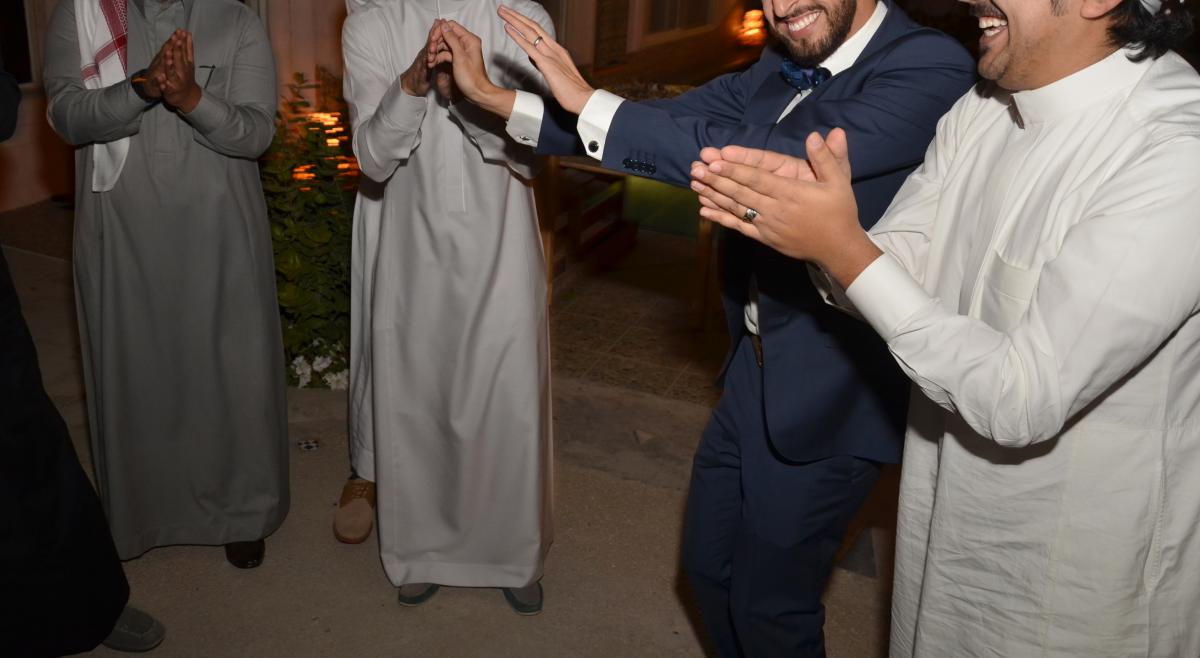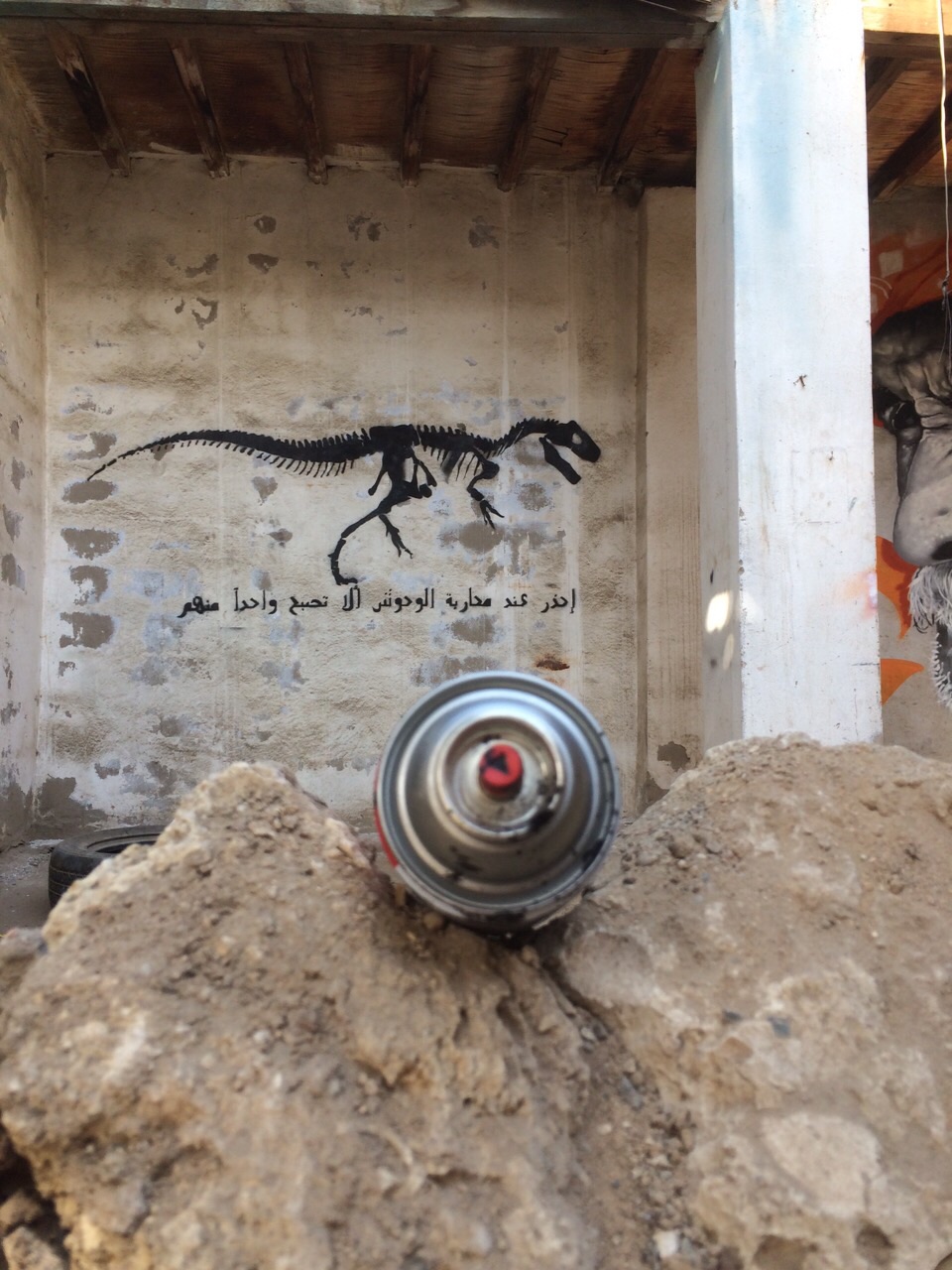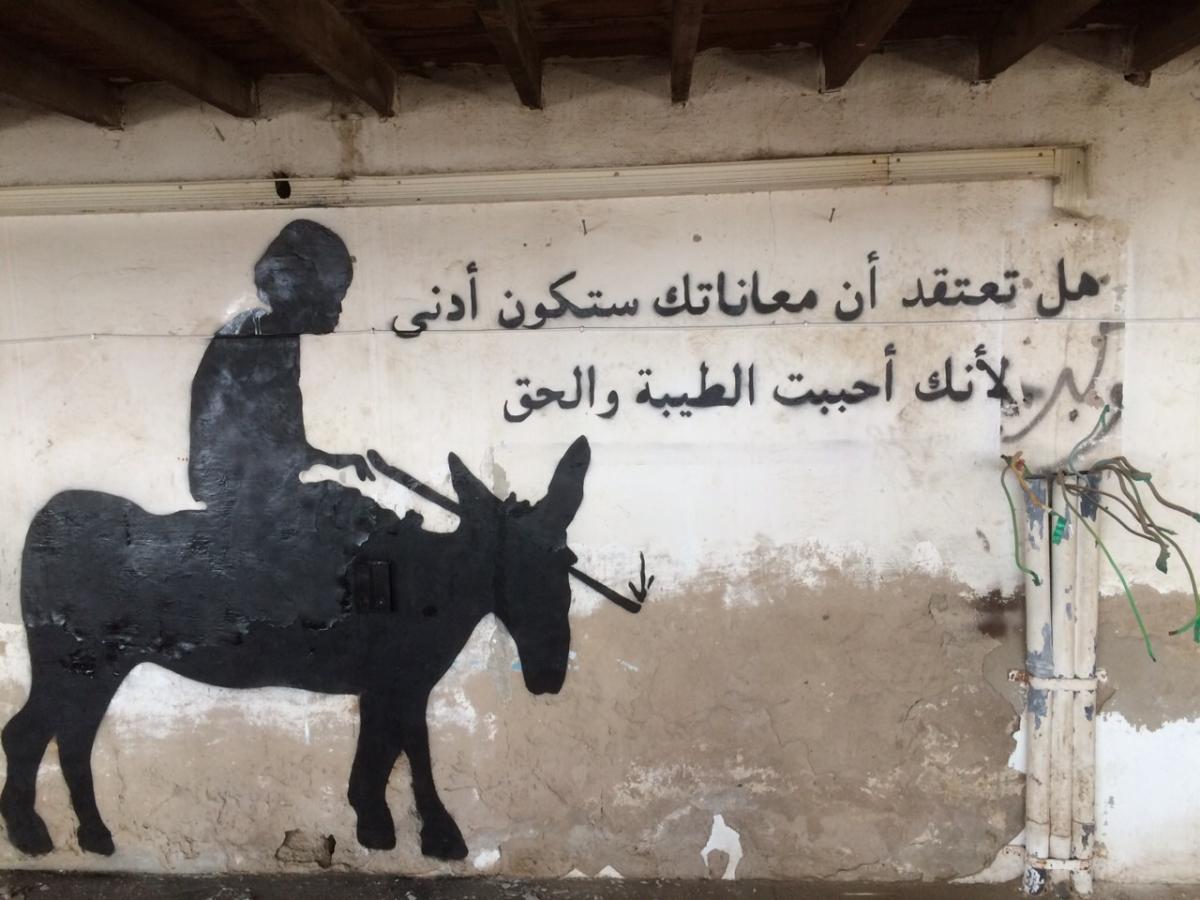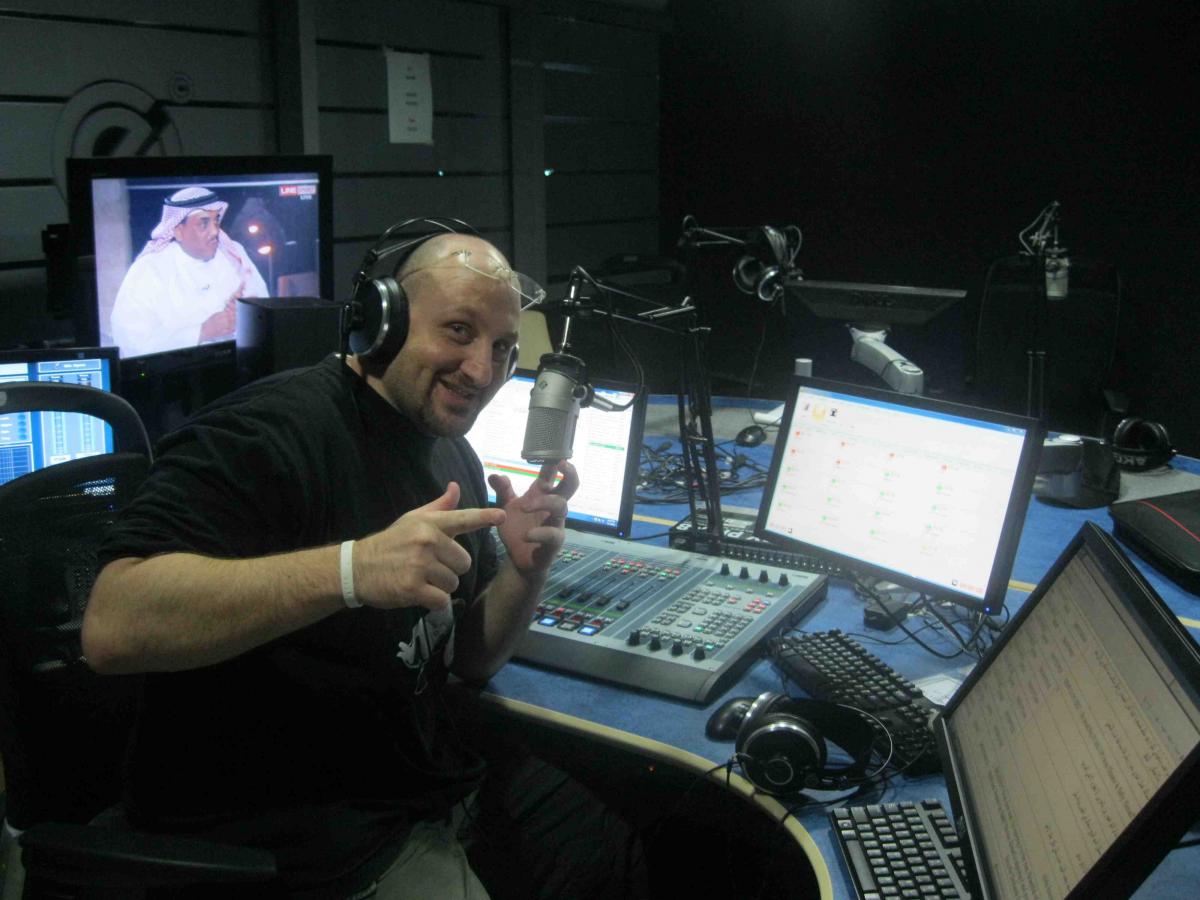Underground Art in Saudi Arabia
In a country dominated by ultra-conservative Islam, espousing unorthodox opinions or behaviour can be dangerous and even fatal. In spite of this, Saudi underground artists are finding each other, making connections and even emerging from the shadows.
Cover photo: Riyadh, the capital and largest city of Saudi Arabia. (Photo: Fedor Selivanov)
For most people Saudi Arabia is a land synonymous with oil wealth, the Al-Saud monarchy and the ultra-conservative Wahhabist branch of Islam. They know that women are forbidden to drive, bloggers are flogged for criticising the government, and that the morality police (officially, the Commission for the Promotion of Virtue and the Prevention of Vice or CPVPV) arrest people for dancing at birthday parties. What is less well-known, however, is that Saudi leads in both the production and consumption of original web content in the Middle East and North Africa region, and that it has produced some of the area’s most critically acclaimed and profitable works of contemporary art. It is a country where street artists organise exhibitions and DJs spin fresh beats at raves. How is such diversity and creativity possible in a country where movie theatres are banned and public concerts and art displays are subject to stringent regulation?
Part of the answer is that the average Saudi is extremely young and adept at digital communication. More than 30% of the population is under the age of 14, and the median age is barely 26. And, as elsewhere in the developed world, these young people spend much of their time online: broadband penetration is currently at 60%, and smartphone penetration is at an impressive 68%, higher even than South Korea, a country known for its smartphones. Social media and content services have taken the place of cinemas, bars and music halls: Saudi is among the top ten countries that contribute to Twitter’s 400 million daily tweets, and it logs the highest per capita share of YouTube’s one billion daily views.
One of Saudi’s most prominent clerics has called Twitter a threat to national unity, and the head of the CPVPV has stated that anyone using social media ‘has lost this world and his afterlife’, and yet Twitter remains the predominant place for both liberal and conservative voices to debate public issues.
In this online world, Saudis can explore a rich variety of arts and expressions in relative safety. And while the Internet keeps them up to date with such world-renowned artists as Banksy and Shepard Fairey, it also brings them domestically produced content on a par with global standards. For example, the Saudi video production house Telfaz11 creates humorous videos and web series that tackle such highly controversial topics as corrupt land monopolies, the destruction of Islamic heritage sites in the Hejaz, ultra-conservative religious propaganda, women’s rights and the poor treatment of migrant workers. It has established a strong bond with young viewers for whom these shows are not only entertainment, but also a creative reflection of their voices, views, concerns and challenges. ‘They tell my story, but in a funny context and in a nice six-minute video,’ says Sami, a 24-year-old machine operator. ‘It’s true, the videos are funny, but they also address what we’re going through. Saudi is not an easy place to live. It’s so corrupt, houses are expensive, and we are always arguing about social controversies. Television stations don’t talk about these things, but YouTubers do,’ he adds.
‘If you think about the Arab Spring and all the changes that happened that year, you’ll find that we, as Arabs, have changed the way the world sees us, but not only that:, we’ve also changed the way we see ourselves.’ — Alaa Yousif, managing director, Telfaz11
But the Internet is more than just a source of content for Saudis. It plays a critical role in providing venues for public discourse and collaboration that have been lacking for so long, serving as a place to meet, share ideas, discuss events and find kindred spirits. While the CPVPV patrols the pavements to ensure that men and women do not walk together unless they are related, young Saudis use WhatsApp groups, Facebook messaging threads, and private social networks such as Path to plan their outings, Halloween parties, mixed weddings, belly-dancing classes, fundraisers, and bike rallies. In the last year alone the underground Saudi social calendar has included numerous events such as a desert rave hosted by two female DJs in Riyadh, a monthly book club meeting in Dammam, a Saudi-themed secret Santa dinner in Dhahran, and even a film screening of all of the movies featured at last year’s Sundance Film Festival. Such events don’t happen every day, but frequently enough to allow Saudis to live semi-normal lives within the borders of their ultra-conservative homeland. They just need to know the right people.

While music and dance have always been part of Saudi life, ‘loud music and inappropriate dancing’ can lead to an arrest. This has given rise to an under ground music and party culture where men freely mingle with women, hidden away from the eyes of the morality police. (Photo: Mohammed AlKindy)
You seem to enjoy a good story
Sign up to our infrequent mailing to get more stories directly to your mailbox.Not that knowing the right people is simple or without risks. The lack of unmonitored public spaces in Saudi Arabia coupled with the justifiable wariness of members of these communities means that it is harder to make connections here than in other countries. Twitter, where both liberal and conservative Saudis go to debate headlines and current events, has been a great facilitator of connections that might otherwise never have been made: discussions of popular topics can lead to digital relationships in which people follow each other, share thoughts and links, and, eventually, arrange to get together. The personal meeting of two Twitter friends is often followed by a merging or overlapping between their social circles, a simple and seemingly obvious phenomenon that has been essential to the formation and growth of underground social groups in Saudi Arabia. The process is haphazard, uncertain and often slow; however, it also leads to the creation of strong, long-lasting connections.
When those connections form between artists it becomes easier for creative ventures to move from virtual space into the real world. A primary example is the annual LoudArt exhibition, an initiative by gallery manager Raneen Bukhari. In Ms Bukhari’s words, ‘LoudArt is a way for emerging artists to showcase their talent on a regional platform, as well as a place for established artists to present experimental work.’ Each year, organisers announce a broad theme, choose pieces from among the artist submissions, and exhibit the selected works at the main event in Khobar before taking them on tour around Saudi and the Gulf region. What started as an experimental concept in 2012 has quickly grown into an established art platform with more than 8,000 followers, and in the process, it has introduced remarkable young artists such as the graphic artist/calligrapher Ali Cha’aba and the graphic artist/photographer Mohammed Chindy.

Street art by Saudi artist Ali Al Melhem from Dhahran during the Jeddah Street Art Exhibition. The caption underneath the image reads: ‘Beware when fighting monsters, lest you become one of them.’
Another growing movement in Saudi Arabia is street art, and many Saudis who have been exposed to it online or when abroad have taken to the streets to express their thoughts and feelings using stencil graffiti and wheat-pasted poster art. What began as scattered works in hidden corners quickly led to the emergence of collectives such as the Instagram-based @SAUDISTREETART and the recent Inner Voices exhibition in Jeddah, where dozens of street artists came together to convert an abandoned hangar in the historic district of Al-Balad into an open-air exhibition space. Indeed, the trend is flourishing to the point that there are already young Saudi scholars such as Rana Al-Jarbou who are building an academic career based on studying and analysing the works and messages of Saudi street artists.
These art initiatives have faced their fair share of opposition. The country is almost evenly divided between conservative followers of Wahhabism and more liberal voices, and works of art, especially contemporary art, are often the subject of intense controversy. Furthermore, the 140-character limit on individual tweets can exacerbate the conflict by reducing arguments to soundbite-length quips and taunts. In 2013 when LoudArt featured a collection of pop art works that showed famous cartoon characters engaged in Islamic activities such as prayer it sparked a heated debate on LoudArt’s Instagram page; some viewers deemed the works offensive to Islam, while others saw them as trying to bridge the gap between modern children and centuries-old Islamic traditions by using familiar characters. Fortunately, although the matter could have had serious consequences for the artist and organisers, it did not escalate beyond the cybersphere, an achievement that was in no small part due to the organisers’ diplomacy. Indeed, in a kingdom where there is a fine line between unorthodox opinions and fatal heresy, artists and curators have to choose their words carefully, as the smallest error of judgement could mean the difference between explaining a controversial work of art and admitting to blasphemy.
Many writers and artists have been the victims of an interview slip or an unrevised sentence that ruined their careers (and sometimes lives.) However, the recent wave of web-based, Saudi comedians seems to have an impressive, second-nature understanding of what can and what cannot be done or said.
Islam has played such a fundamental role in the country’s narrative that it is hardly surprising that religion and art are inextricably intertwined, or that many Saudi artists have chosen Islam to be the subject of their works or the inspiration behind it. Basmah Felemban, a 21-year-old Saudi graphic artist whose pieces have been featured in the British Museum, often features elements of Islam or Islamic art in her creations. In her words, ‘I found my middle ground through reading religion and philosophy, especially through reading poetry and the Quran independently. This path has been essential for my work, as I believe it added depth that I don’t think I could have achieved without going through this spiritual journey.’ Contrary to what many might assume about the limiting effect of a conservative environment, Felemban finds it to be an impetus towards better art. ‘Making art in a conservative community actually pushes the artist to go much deeper in his work than if he had the freedom to be direct with his message. You have to go around it and use symbols and be smart about it, and I think that takes the artwork to another level. So far, I think the art that comes from these communities is some of the most intelligent on the scene because we have that challenge to overcome.’

Instead of using a confrontational directness that could lead to a clash with the morality police (CPVPV) Saudi artists turn to a poetic ambiguity open to a broader interpretation as in this example by Ali Al Melhem: ‘Do you think that your suffering will be less worthy because you loved kindness and justice?’
At times that challenge is considerable to say the least; the CPVPV as the embodiment of Wahhabist Islam gives the conservative faction a united, officially sanctioned voice that the liberals lack. Though a growing percentage of the population is supportive of openness, dialogue and creativity, there remains a significant number of people who condemn such creative works as immoral acts, acts seeking to copy Western ways, and in extreme cases, acts of heresy. To this day it is not uncommon to hear about a book fair or gallery opening that was shut down by the CPVPV on such grounds as the prevention of gender mixing or protection of the public from an act promoting blasphemy. Nonetheless, many analysts of Saudi internal affairs are suggesting that recent government shuffles in the leadership of the CPVPV represent a move towards a more lenient and open era. This analysis is further supported by recent government-backed projects such as the King Abdulaziz Centrer for World Culture, an upcoming billion-dollar facility for art, education and culture.

Hass Dennaoui, better known under his artistic name Big Hass, is a music activist and the host of the first Saudi hip hop FM radio programme. Through his persistence Big Hass has been able to broadcast both Arab and global hip hop artists. Like all programmes, his show is monitored and not all songs can be played, but Big Hass has given exposure to hip hop in the Middle East, dispelling stereotypes and shedding light on an underappreciated art form.
Scheduled to open in early 2016, the King Abdulaziz Center for World Culture is a multipurpose complex that aims to foster creativity, inspire innovation, and promote cross-cultural education in the kingdom. With plans to host a library, museum, children’s discovery zone, galleries, cafés, idea translation lab, and a world-class theatre space, it promises to bring new, unprecedented public places to Saudi Arabia: beyond the segregated restrooms and prayer rooms, the centre’s current plans create a public space for Saudi men and women to interact and work in mixed company. This announcement was greeted with some outrage by the country’s Wahhabi core, but the controversy was quickly overshadowed by overwhelming calls of support and enthusiasm for this much-needed cultural centre.
The average young Saudi today could be listening to top -40 hits from the United States, then re-blogging the works of a French graphic artist on his Tumblr page, before going home to watch a dubbed South Korean television show and read a translated Japanese manga magazine.
With the completion of the tenth year of the King Abdullah Higher Education Scholarship programmes, another batch of educated young Saudis will return from their studies abroad to integrate themselves into the workforce, balance their newly acquired world views with their country’s conservative traditions, and seek ways to express their thoughts, apply their talents, and contribute to their society. It is not yet clear where Saudi creative culture is headed. It might remain a domestic reality, hidden from the rest of the world, or it might cross the country’s boundaries into the international scene. One thing, however, is sure: Saudis will continue to produce creative works and share them for everyone to see.

